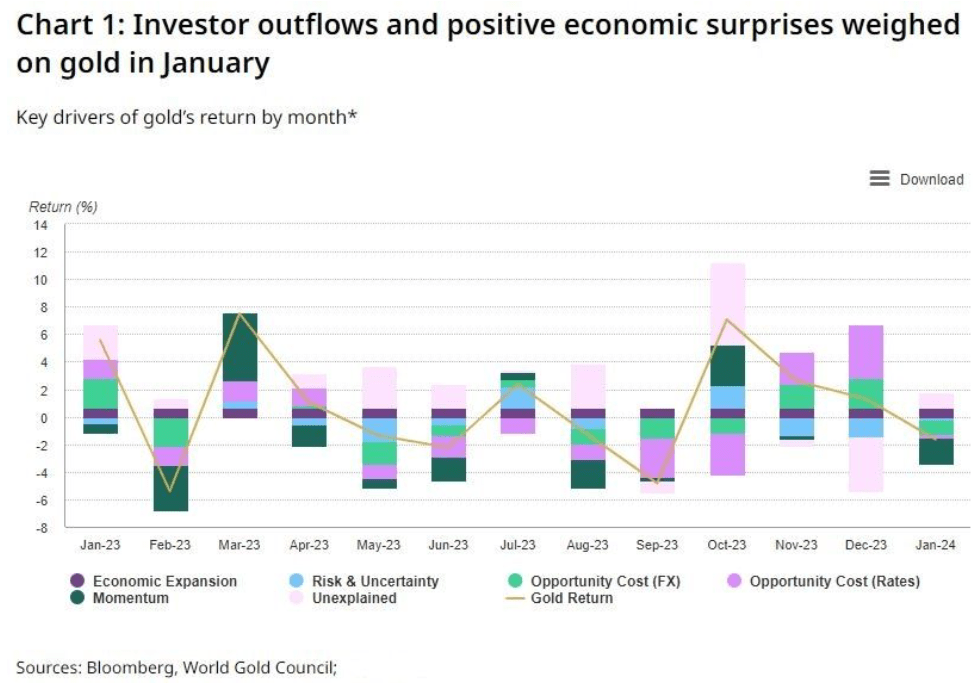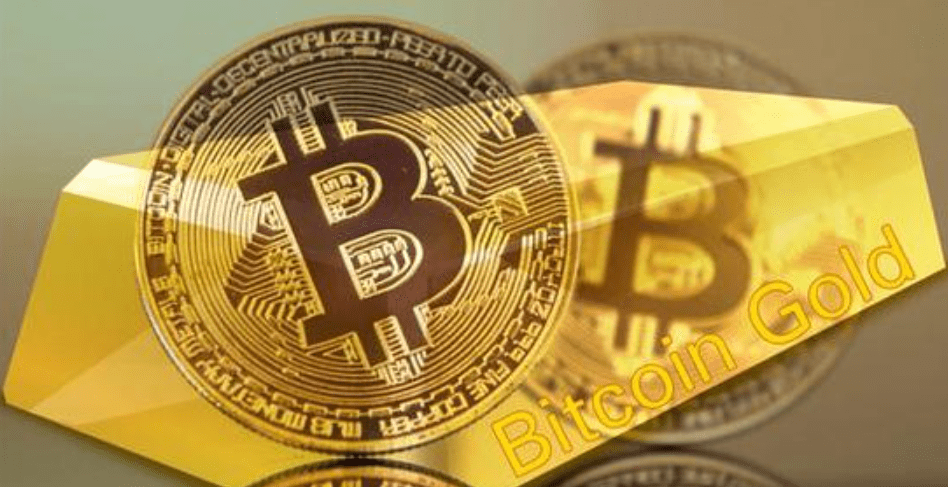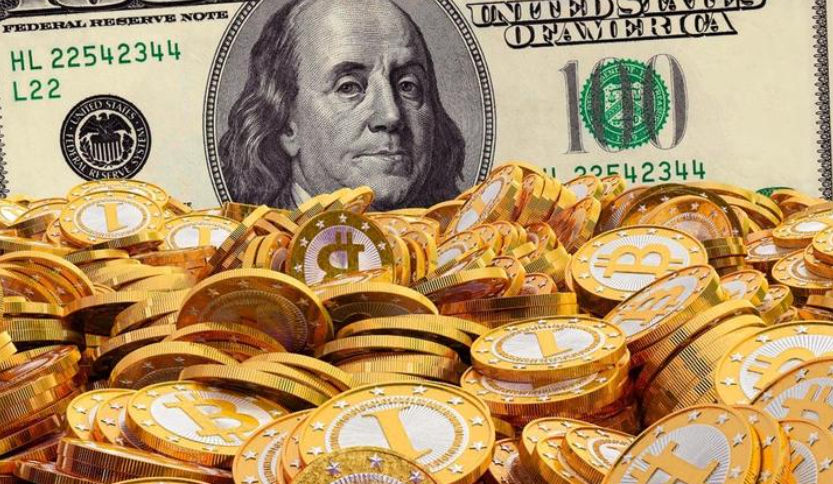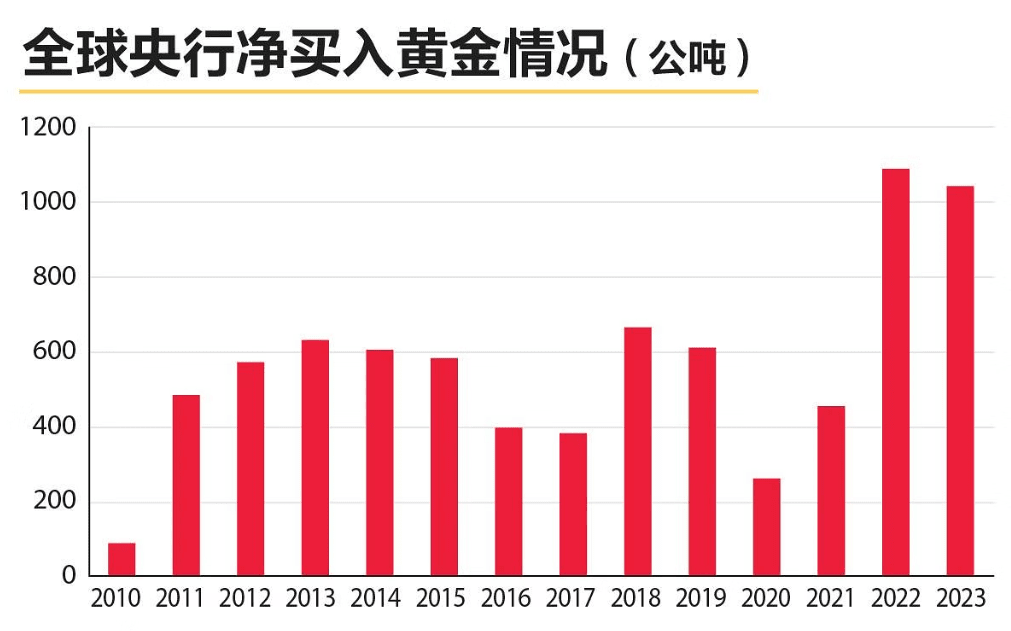Since the US SEC approved the Bitcoin spot ETF to enter the US stock market in January this year, it took only 30 trading days for the Bitcoin ETF to expand from zero to nearly $40 billion, exceeding the size of the silver ETF by about $10 billion and temporarily forming a "30:70" pattern with the gold ETF with a size of about $90 billion. The Bitcoin spot ETF has thus become the fastest growing ETF in Wall Street history.
The massive injection of US dollar liquidity has kept the price of Bitcoin at $52,000 recently. According to the current international gold price of about $2,000 per ounce, the value of one coin is about one and a half kilograms of gold (1 ounce = 28.35 grams).
As the investment demand for gold and Bitcoin contrasts sharply, the debate between the two assets has once again heated up, which reminds people of 2019. In 2019, Bitcoin rebounded strongly, eventually reaching an all-time high of more than $60,000 per coin, which had a 3% to 5% impact on the price of gold.
Many believe this could happen again, but some commodity analysts warn investors not to read too much into the trend, as the sell-off in gold began long before the Bitcoin ETF was approved. As February draws to a close, gold ETFs are expected to record nine consecutive months of outflows.
If we extend the horizon to 2023 and broaden it to related ETFs around the world, we can see that the accelerated outflow of gold ETFs has been unstoppable since mid-2023. Data compiled by the World Gold Council show that gold has had a difficult year.

“While data is limited, our analysis shows that the correlation between inflows into gold and Bitcoin ETFs is close to zero, suggesting that the increasing availability of Bitcoin is expanding the pool of available capital for all alternative assets, rather than dividing the pie among alternative assets,” commodity analysts at TD Securities said in a note.
Meanwhile, gold prices have held steady above $2,000 an ounce despite lackluster investment demand, with many analysts expecting prices to hit record highs this year. If Bitcoin were truly a threat to gold, the precious metal would now be trading well below $2,000 an ounce.
Michele Schneider, head of trading education and research at MarketGauge, said that one thing Bitcoin and gold have in common is that they are both tools to hedge against the depreciation of fiat currencies. But in the current environment, cryptocurrencies may have better advantages.

Many facts undoubtedly prove a point that has been repeated many times, that is, Bitcoin is better than gold. In fact, the whole process of monetization of a commodity will go through several stages: (1) collectibles; (2) speculative goods; (3) storage of value (SoV); (4) medium of exchange (MoE); (5) unit of account.
It took thousands of years for gold to complete the above process. The monetization of Bitcoin may be a great monetization process that our generation can witness in our lifetime (maybe we won’t live long enough to see the process fully completed). In the past decade, Bitcoin has gone through the first two stages, driven by idealists and fanatical speculators respectively. Since the first half of 2019, Bitcoin has officially entered the third stage.
Obviously, Bitcoin's ultimate mission is to defeat the US dollar, but before that, its historical mission is to defeat and surpass gold first. The reason is nothing but the objective law of the monetization process mentioned above. Bitcoin must first defeat stocks at the speculative level, and then defeat gold at the value storage level, before it can enter the next stage and challenge the global status of the US dollar as the king of currencies as a medium of exchange and unit of account.

However, gold has a long history and a solid position, and economic uncertainty will continue to support prices. While the growing function of Bitcoin and the crypto market in the global economy makes it an attractive asset in the eyes of investors, gold has not yet become irrelevant. If geopolitical tensions escalate again, gold prices may soon break through $2,100.
Most importantly, the precious metal still has one major advantage: central banks remain active buyers. In 2023, central banks purchased more than 1,000 tons of gold for the second consecutive year. At the same time, over-the-counter gold trading drove global gold demand to a record high last year. And strong consumer demand in Asia, especially China, continues to dominate the market and is a key factor in gold prices being able to hold the key support above $2,000. Many analysts point out that the insatiable demand of central banks has weakened the influence of Western investors on gold prices.

Summarize
In the global financial market, Bitcoin and gold, as two highly watched assets, each has shown unique appeal and formed its own loyal fans among investors. Bitcoin's increased liquidity and recognition have made it a popular asset in the eyes of investors, while gold's historical status and central bank demand have maintained its stable position.
Although the debate over gold and bitcoin has sparked widespread discussion, they are not completely mutually exclusive, but can coexist as part of a diversified investment strategy. Investors should reasonably allocate assets such as Bitcoin and gold based on their own risk tolerance and investment goals to achieve better portfolio performance.
$BTC #ETF #黄金


